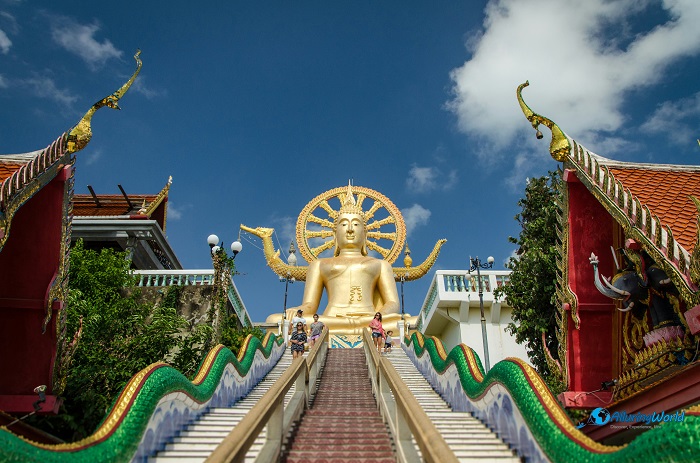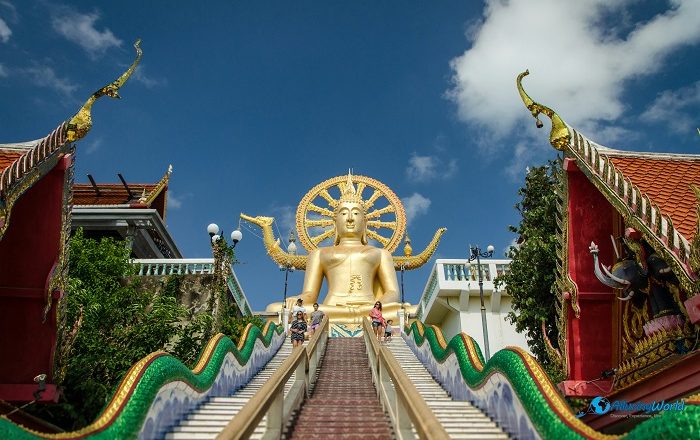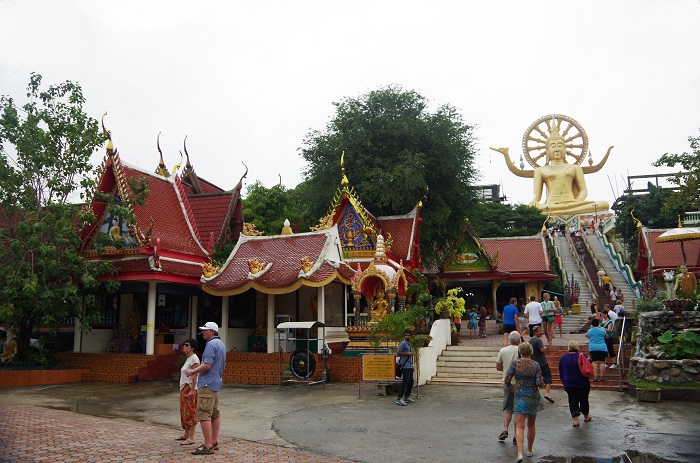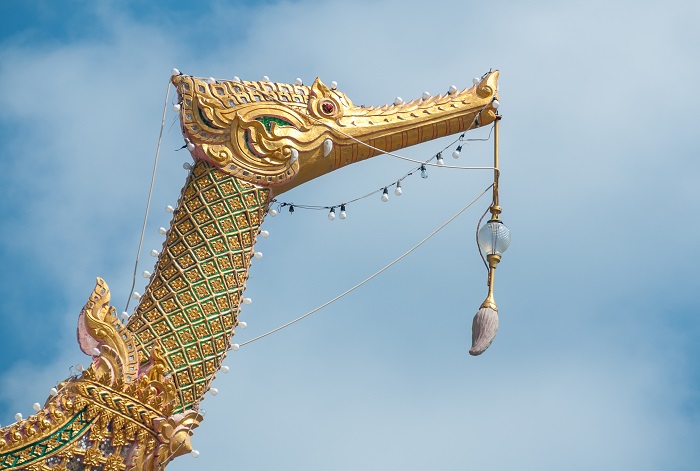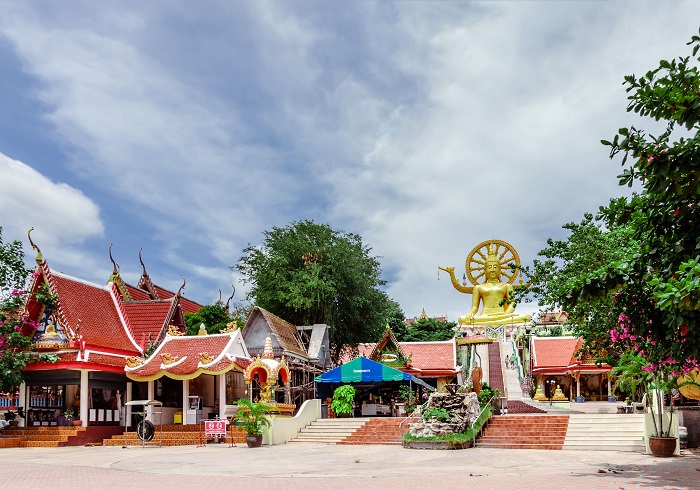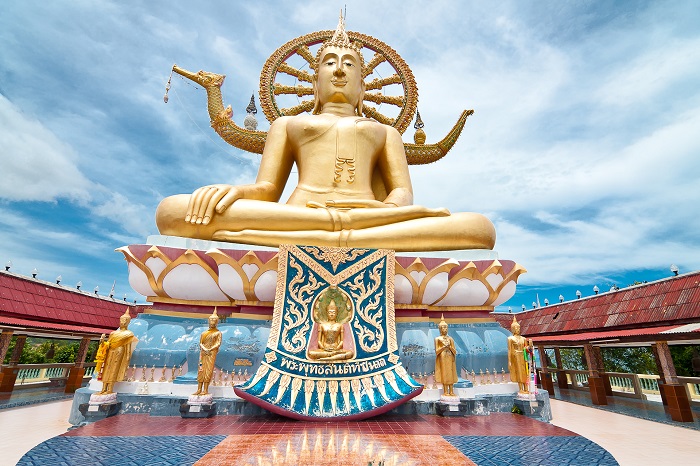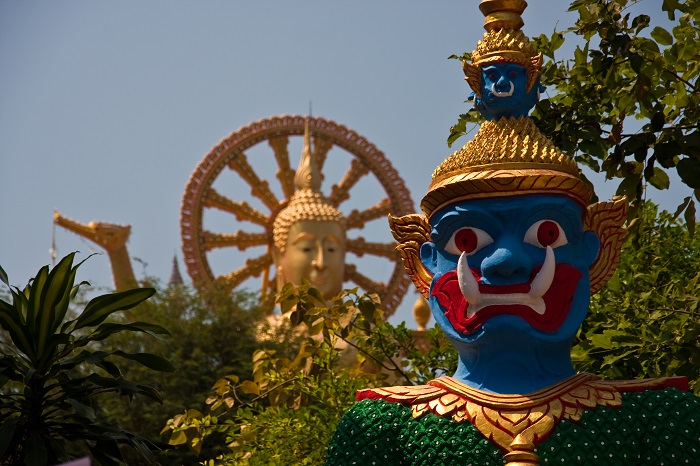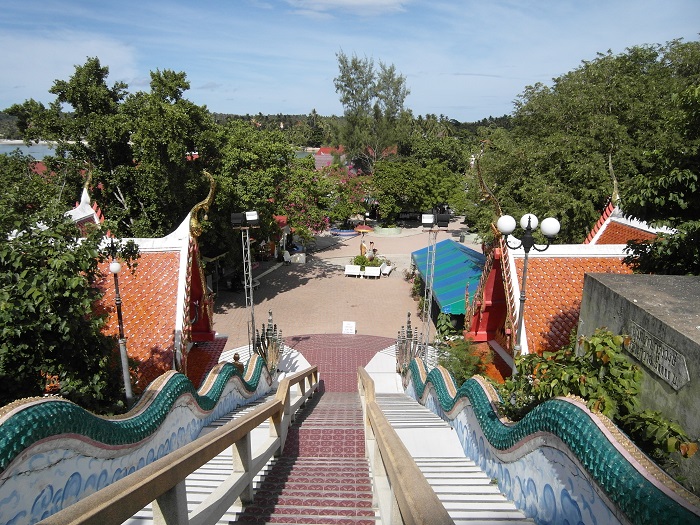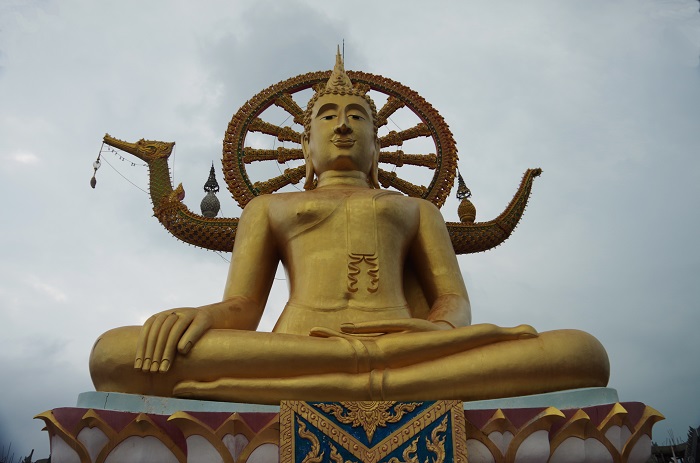Wat Phra Yai, commonly known as the Big Buddha Temple, is an important Buddhist temple that is considered to be one the most iconic and revered religious sites it is located on the small island of Ko Phan, in the vicinity of the larger island of Koh Samui in the Gulf of Thailand, within the eastern part of the Surat Thani Province of the Kingdom of Thailand.
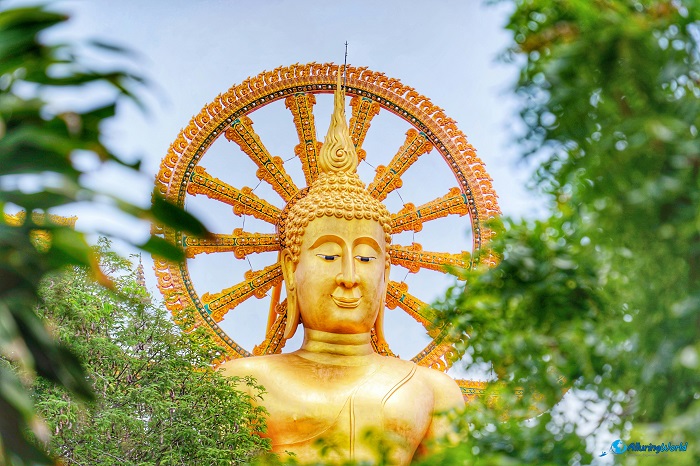
As this temple is part of a small island, it is connected to the northeastern coast of Koh Samui by a short causeway, adding further to the accessibility and popularity of this magnificent temple. The temple’s most striking feature is the massive golden statue of Buddha, which stands 12 m (39 ft) tall and can be seen from several kilometers away, making it a prominent landmark both on land and from the sea.
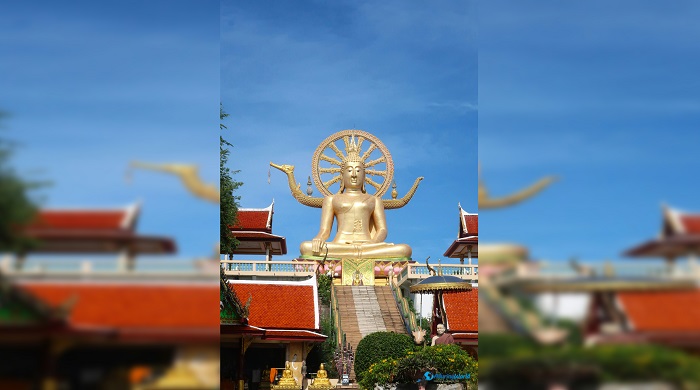
Wat Phra Yai was constructed in 1972 by local monks, with the primary purpose of creating a spiritual center for the island’s inhabitants and a place of pilgrimage for Buddhists, and the idea behind its construction was to create a monument that would serve as a reminder of the teachings of the Buddha and promote the practice of Buddhism among the local population. The statue represents Buddha in the Mara posture, which symbolizes steadfastness, purity, and enlightenment, as Buddha is depicted in the moment of victory over the temptations of the demon Mara.
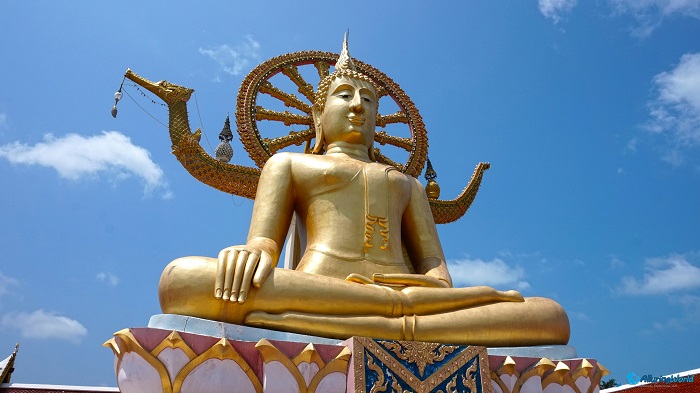
The construction of Wat Phra Yai was a significant undertaking, involving both skilled craftsmen and local labor, as the statue was built using reinforced concrete as the core structure, which was then carefully covered with gold-colored tiles to give it its striking appearance. The design reflects traditional Thai artistic styles, with intricate details that are typical of Buddhist art in Southeast Asia, where the base of the statue, which serves as the temple’s main platform, is adorned with elaborate murals and carvings depicting various scenes from Buddhist scriptures, as well as representations of mythological creatures that are believed to protect the temple.
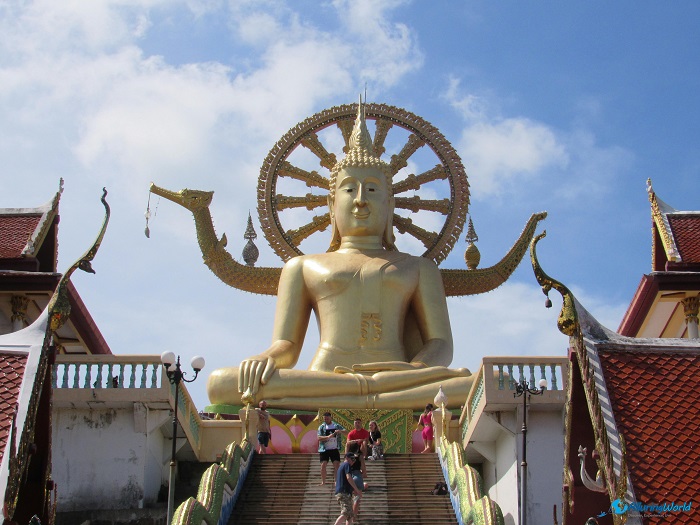
The importance of Wat Phra Yai has evolved over the decades since its construction. Initially, it served as a center for local religious activities, providing a place for the community to gather for worship, meditation, and festivals, however, over time, its significance grew beyond the local community as Koh Samui developed into a popular tourist destination. Today, Wat Phra Yai is not only a place of worship but also one of Koh Samui’s most visited attractions, drawing thousands of visitors each year from around the world.
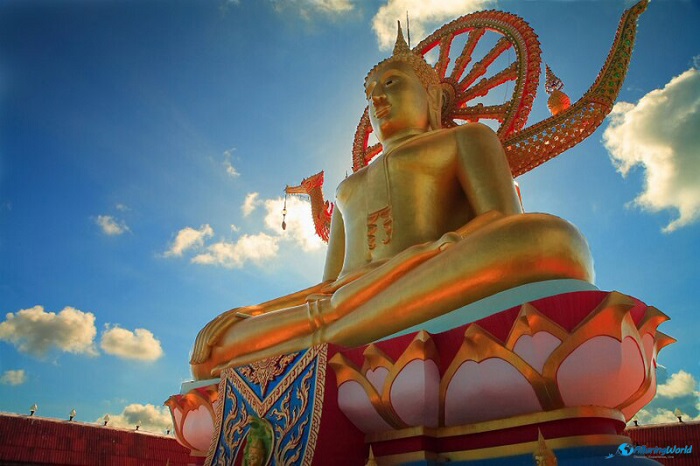
The temple’s importance in the past was primarily spiritual, as it provided a place for the practice and preservation of Buddhist traditions, and for the local people, it was a symbol of their faith and cultural identity as it played a central role in the religious life of the community. The construction of the temple and the Big Buddha statue was also seen as an act of merit-making, which is a key concept in Buddhism, and by contributing to the construction and upkeep of the temple, the local people believed they were accumulating good karma, which would bring them blessings in this life and the next.
Today, Wat Phra Yai continues to be a vital spiritual site, but its role has expanded to include cultural and educational functions. The temple complex hosts a variety of activities throughout the year, including religious festivals, meditation retreats, and cultural events that attract both locals and tourists, and the Big Buddha statue remains the focal point of these activities, as it is common to see visitors making offerings, lighting incense, and participating in traditional rituals at the base of the statue. In addition to all that, the temple also serves as a place of learning, where monks offer teachings on Buddhism, meditation, and mindfulness to those who are interested.
Still, visiting Wat Phra Yai is a must for anyone traveling to Koh Samui, not only for its religious significance but also for the breathtaking views and serene atmosphere it offers. The temple is easily accessible from most parts of the island, and it is only about a 10-minute drive from Samui International Airport. Visitors can reach the temple by taxi, motorbike, or even by foot if staying nearby, and the temple grounds are open to the public every day from early morning until late evening, and there is no entrance fee, although donations are appreciated to help with the maintenance of the temple.
Upon arrival, visitors are greeted by the sight of the majestic Big Buddha statue, which dominates the landscape, even though the temple complex itself is relatively modest in size, it is beautifully maintained and offers a peaceful escape from the hustle and bustle of the island’s more touristy areas. Visitors can climb the steep staircase that leads up to the base of the Big Buddha statue, where they can enjoy panoramic views of the surrounding area, including the turquoise waters of the Gulf of Thailand and the nearby islands.
Furthermore, for those interested in learning more about Buddhism and the significance of the temple, there are information boards around the temple that provide insights into the history of Wat Phra Yai and the symbolism of the Big Buddha statue, but the resident monks are also friendly and approachable, often willing to engage in conversation and share their knowledge with visitors. The temple shop sells a variety of Buddhist souvenirs, including amulets, incense, and prayer beads, which can serve as meaningful keepsakes for your visit.
To add even more to the spiritual and cultural attractiveness of this majestic place, Wat Phra Yai is also a great spot for photography because the contrast between the golden statue and the blue sky, especially at sunrise or sunset, provides stunning photo opportunities. The peaceful ambiance of the temple, combined with the beauty of its surroundings, makes it a perfect place for meditation, reflection, or simply to take in the serenity of the location.
Wat Phra Yai’s significance today extends beyond its religious function; it is a symbol of Koh Samui’s rich cultural heritage and a testament to the enduring power of faith in shaping the identity of a community, and as it serves as a reminder of the importance of spirituality in a rapidly changing world, it offers a space where people from all walks of life can come together to seek peace, wisdom, and inspiration.
In conclusion, Wat Phra Yai is much more than just an attraction; it is a living symbol of Thailand’s deep-rooted Buddhist traditions and a place of great spiritual importance. Its towering Big Buddha statue stands as a beacon of faith and a source of comfort for both locals and visitors alike, and whether you are a devout Buddhist, a curious traveler, or someone seeking a moment of tranquility, Wat Phra Yai offers an experience that is both enriching and memorable, making it an essential stop on any visit to Koh Samui.
